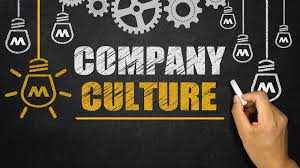JUL 2025, Vol 22, Issue 7
Overview
- Defining Your Company Culture
- Best Practices for Managing People in Transition
Defining Your Company Culture
Though no two cultures are exactly alike, most organizations can be classified into cultural categories that share key characteristics. Recognizing which culture types your organization identifies with can help you define and refine your culture.
Research in Harvard Business Review (HBR) has identified eight distinct culture styles:
- Caring, collaborative, and supportive
- Purposeful, idealistic and altruistic
- Learning, inventive, and innovative
- Enjoyable, fun and stimulating
- Results-oriented, driven by achievement and winning
- Authoritative, competitive, and controlling
- Safe, predictable, and risk-averse
- Orderly, methodical, and cooperative
According to HBR, every organization has some combination of these styles. Yours may have only a few, or it may have most or all of them, each in varying amounts.
None of the styles are inherently better than the others; they are just different from each other. Each style has potential advantages and disadvantages. Your company culture, the researchers say, can be defined by how prominent each of these styles is in your organization and whether they align with employees’ perceptions of the culture.
Even though a company culture can’t be copied, you can learn a lot about developing and maintaining a great culture from others’ examples. Organizations with a truly great culture don’t all look alike and may have a very different mix of the eight culture styles than you do.
Investing in developing a culture that represents the best interest of your people, and your customers will put you well on your way toward making your organization a great place to work and a great place to do business for your customers!
- - - -
Best Practices for Managing People in Transition
Make sure people understand that the company is committed to and supports diversity. If someone who reports to you informs you of their desire to transition or if an individual in your workplace is currently in the transition process, your support is critical.
Key Principles
- If you are unfamiliar or uncomfortable with the transition process, allow the transitioning individual to educate you (if they are willing). Additional education and support is available from a variety of different organizations.
- Listen carefully to what the individual is telling you about how they’d like to be treated. For example, do they want to keep their transition as quiet as possible, or do they wish to celebrate publicly?
- Be open-minded and discuss the transitioning individual’s needs and concerns.
- If you oversee, manage, or lead an employee who is transitioning, it is important that you demonstrate an understanding, and use a sensitive approach to their needs and concerns.
Based on past experiences of bias, it may be quite stressful and frightening for the employee to make themselves vulnerable to a person upon whom their job depends. It is important that you make it clear that your conversation will be held in confidence. Also ask their permission to talk to an HR professional for further assistance.
- Explain any questions and concerns you might have and ask their opinion on matters.
- Once the employee has made contact with their manager or HR professional, information must be gathered before planning the steps of transition can begin.
The HR professional needs to know when the transitioning employee expects to start to present themselves in their new gender. Usually by the time an employee comes to the company for assistance, they will have a date or time frame in mind for presenting themselves in their new gender.
The employee may also have an idea about when they may need to take some time off for medical needs. These dates can change, depending on the person’s readiness at each stage.
- Provide support: Employees that have decided to transition are normally exposed to various levels of stress. It is important that you provide information on your Employee Assistance Program (if you have one) and other resources for the employee to seek one-on-one counseling during the transition process.
- If the transitioning employee prefers to move work locations, the business should work on a best-effort-basis to move the employee to a similar role, within an appropriate distance.
- If the individual is married or partnered, ask how you should refer to them during and after the transition, e.g. partner, wife, husband, etc. and identify if there are any implications to employer-provided benefits.
Initial Conversations
When an employee contacts their manager or HR to explain they are planning to transition and wants to start presenting in their new identity, the employee will need to be assured that the company will work with them to help make their transition as smooth as possible. It is often with great anxiety that the individual has come to this point as they would have heard stories from other individuals who have transitioned in the workplace who may have been treated badly at work, so this assurance is important.
Second, the employee should be reassured that the information they share will be treated with absolute confidentiality. The employee has probably taken great care to safeguard their status and wants to be sure this information will be disclosed at an appropriate time and in a respectful manner.
In addition, the employee would like to feel confident that the individuals who will help plan their transition will take steps to inform themselves about transgender and the transition process.
Finally, the transitioning employee would like to be assured that they will have input into planning the steps of their transition at work. The employee should always have the main voice in the timing of beginning to work in their new gender role and any changes in their workplace routine.
Respecting the Individual’s Privacy
Not only do the specific steps of transition and their timing vary, but individuals also differ in how public they want to be as they transition.
Some individuals prefer that very few people know they are about to transition and hope that after the transition they can quietly blend in as members of their new gender. Others are committed to educating the public about transitioning and are eager to answer questions and continue to talk openly about being transgender long after transition.
Work situations vary, too. The type of workforce; the nature of work being done; the amount of interaction the individual employee has with peers and customers and the surrounding culture all have a bearing on how the transition should be handled. For all these reasons, there is no single formula for managing transitions in the workplace.
It is important to work closely with the employee to ensure we respect their privacy and their preference on the amount of information that should be shared with the rest of the employees. It is essential that open and honest communication be established to build trust for each party. With each right, also comes responsibility or an expectation. A successful transition in the workplace can only occur with commitment and understanding of each involved party.
Control over the flow of information is very important in managing the transition process. The manner in which co-workers and clients are informed about the employee’s change and the timing of this disclosure are critical in making the transition progress smoothly. Therefore, confidentiality should be a primary concern in the early stages of transition planning.
- - - -
Contact HR Strategies at 302.376.8595 or info@hrstrategies.org if you would like support or would like to learn more about the items in this newsletter. Please contact us if you would like to be removed from our Monthly Strategies mailing list or if you would like for us to add someone to our mailing list.

